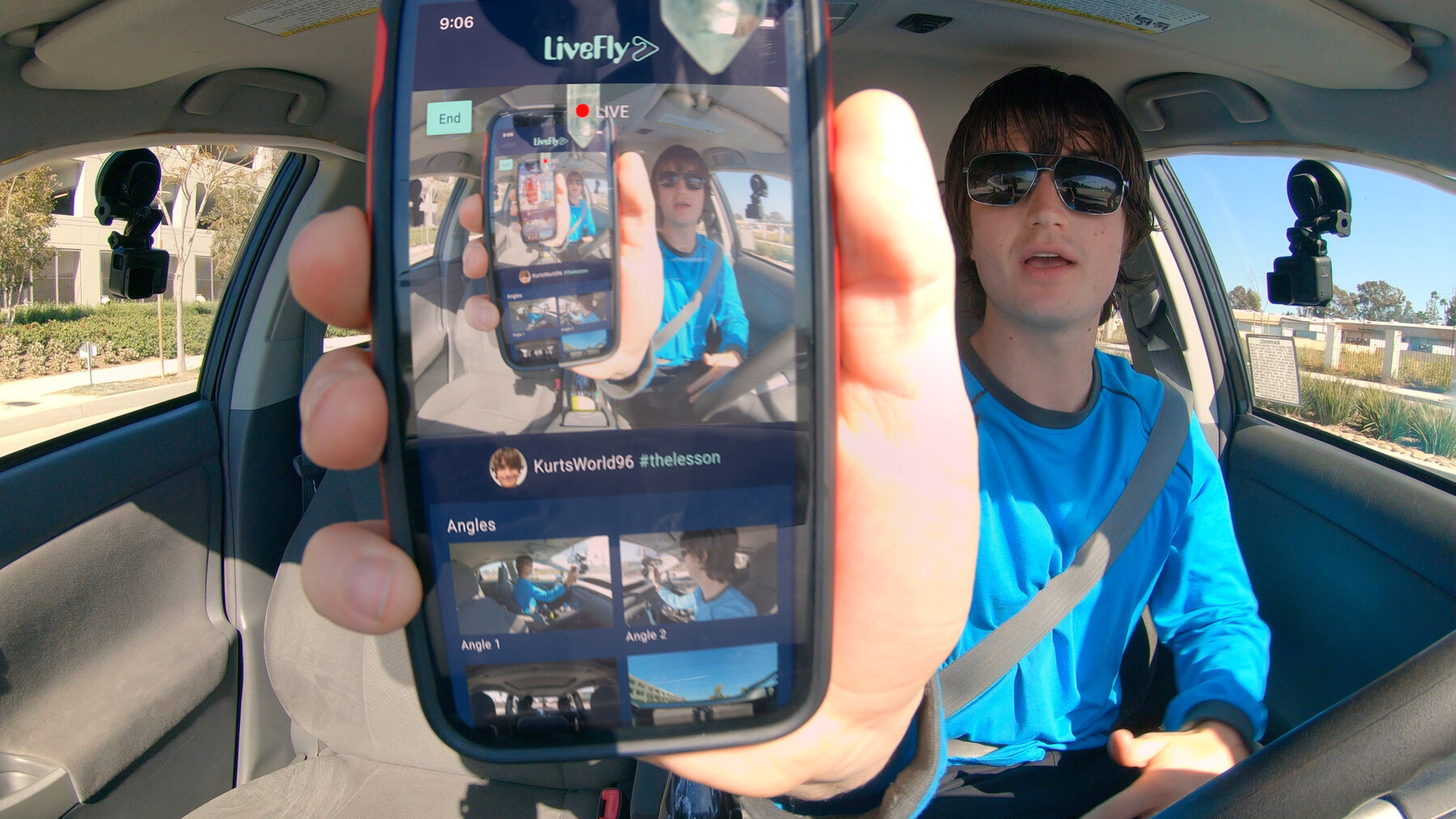Review by Crue Smith
2020 was the worst year for the theatrical experience. Due to COVID-19, the impending future of solely viewing new releases from home feels like its fully here. The silver lining of this is that the smaller straight-to-VOD genre movies that might have not gotten much play or attention can now can have a better chance to be viewed by more people. A recent release that stood out to me was Eugene Kotlarenho’s Spree – this nasty little horror film stars Joe Keery as Kurt Kunkle, a rideshare driver and wannabe influencer who has spent the last decade desperately trying to gain a following on social media. Tragically, he’s just inept, clueless and pathetic. Desperate for attention, Kurt decides to livestream himself going on a killing spree around Los Angeles, using poison water bottles to kill passengers during his rideshare shift. Regardless of its flaws, I found Spree to be a one of the best and disturbing horror films of the year and one of the most accurate satires of the current cultural moment.
By far the strongest aspect about Spree is its cinematic style and aesthetic, primary Kotlarenho’s editing sensibilities. The many points of view from the cast of characters are shown through GoPros, smartphone live streams, and Youtube videos, as well as cop car dash- and traffic-cameras. Compared to most of the other found-footage films, Spree has much more of a personal vision and Kotlarenho elevates this gimmick into a unique cinematic experience. Cross-cutting between these different video formats and utilizing unrestricted narration, Kotlarenho is in control, crafting suspenseful sequences that have bloody and terrifying endings. Although Kotlarenho is completely in control of what he wants the viewer to see, he also understands that there should be more democratic approach to style. When split-screen shows multiple actions happening at one, the viewer to decide what to pay attention to – a reflection of social media itself. Kotlarenho and co-writer Gene McHugh also created fake comments that pop up on the screen in real time. Some of the comments are funny and some are disturbing, but all of them feel authentic. All in all, the aesthetic reflects what the filmmaker wants to say about the effects on social media and the lack of empathy that it fosters within an individual.
Spree is one of the rare films that works as a “horror comedy.” The jokes land for the most part, and the kills are bloody, disturbing, but also creative. Joe Keery’s performance also elevates the material. Playing the modern day equivalent of a Travis Bickle or a Patrick Bateman, he feels authentic and believable as an attention-seeking kid whose obsession with with fame has molded him into a psychopath over time. Throughout Spree, we are introduced to wide variety of characters around Los Angeles who wander into Kurt’s death-Prius: fringe white nationalists, “douche bag” bros, narcissistic social media influencers, mediocre comedians, and burnt out DJs. Kotlarenho tries to encompass all the toxic Los Angeles archetypes and have a take-no-prisoners approach to the satire. However, this approach is a double-edged sword: the jokes either really hit or really miss. Some characters are nuanced and clever, like Jessie Adams, the broad and mediocre comedian played by SNL alum Sasheer Zamata, as well as Kurt’s father, a SoCal burn out played by David Arquette. Though both are wonderful and well-written characters and performances, they are brought down by some of the other characters. For example, Mario, the fitness bro, feels over-the-top and dated.
Which brings me to my main critique of Spree: though the film does a lot right, many of the elements of its social critique and satire feel out of touch and forced. There are memes and fads in the film that are already no longer relevant, and it really shows. Yes, Kurt would be a character who would behind with current trends, and Los Angeles is a large place where desperate people that are looking for fame loose their minds. But there comes a point where I don’t know if the characters are purposely out of touch or if it’s the film that’s out of touch. However, in Kotlarenho’s defense, it’s difficult to make a film about the internet; it’s constantly changing. Memes that are popular one day are forgotten the next, and the fact of the matter is, a film takes on average a year or two to come out. Therefore, a satire of influencers and social media can never be 100% up-to-date when presented in this medium. Regardless, Spree is a well made and stylish horror film that’s worth a watch.

